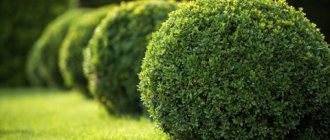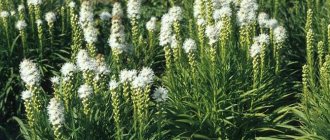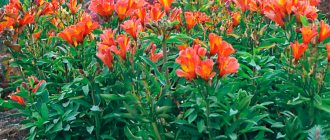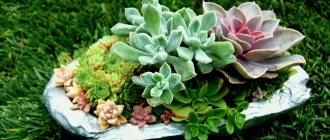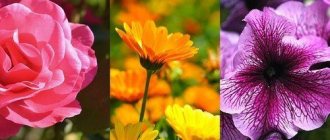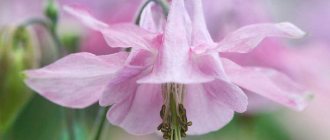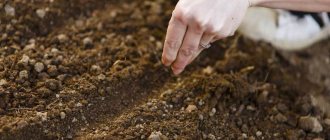From August until the first frost, these flowers decorate the garden. They fill gardens with color when the summer flowers have faded. Thanks to the enormous wealth of species, among asters you can find a wide palette of colors, shapes and sizes (from 20 to 200 cm). Because of their beauty and low growing and care requirements, these flowers are loved by beginning gardeners and people who have little time to spend caring for plants. How to plant asters - growing from seeds, when to plant in the ground, how to care for them is described in this article.
Description of the plant
The genus name Aster comes from the ancient Greek word asteri = "star", referring to the star shape of the flower. The genus is divided into more than 150 species and is part of the large family of plants with basket-shaped inflorescences - Asteraceae.
It is worth noting that perennial asters are not related to those that usually bloom in summer, that is, the annual Chinese asters - Callistephus chinensis.

The height of different varieties varies from a few centimeters to three meters. The shapes, arrangement and appearance of the leaves change with each species. However, all species and varieties are characterized by basket-shaped inflorescences, which are sometimes mistakenly considered to be single flowers. In fact, the long white, pink or blue "petals" are colorful reed flowers, with yellow tubular flowers making up the center.
Although asters are associated with the arrival of autumn, there are species and varieties that bloom in late spring (alpine) and summer. The baskets develop singly or in groups at the ends of slightly pubescent stems. In the garden, these flowers are grown as annual or biennial plants.

Asters on the balcony
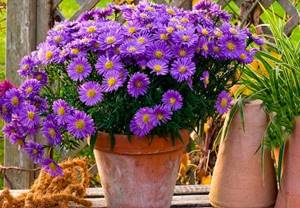
If you want bright, colorful flowers to delight you with their lush heads not only in the flowerbed, but also at home, then read our article. Growing asters on the balcony in the summer is a pleasure, not only for you, but also for those around you, because how nice it is to raise your head and see a well-groomed front garden!
Read also: How to grow parsley on a windowsill all year round
The plants require little care, are unpretentious and resistant to diseases, at the same time they bloom for a very long time and are able to tolerate frost.
Of course, such flowers are a real gardener’s dream, and if you can’t practice on the ground yet, plant pots and pots that will decorate your loggia, balcony, and small terrace will be an excellent choice.
Popular types and varieties
The botanical genus Aster includes Eurasian and American species. Due to significant genetic differences, the North American species are botanically excluded from their own genera and are no longer classified as asters. In particular, the American aster (Symphyotrichum novae-angliae) and the bush aster (Symphyotrichum dumosum), which are now included in the genus Symphyotrichum. The family affiliation was also changed by the Golden Astra, the Chinese Astra and many others.
Shrub
This is one of the most famous autumn flowers. According to new taxonomic characteristics, the bush aster was transferred to another genus, and at present its correct name is Symphyotrichum dumosum.
A perennial herbaceous plant with a compact spherical shape and narrow-lanceolate leaves 3-10 cm long. It grows, depending on the variety, up to 20-50 cm. Thick, rigid stems are divided into several branches, and these are further divided into other branches. Flowers appear on their top. The plant blooms very profusely. It has characteristic, chamomile-like inflorescences, in which tubular flowers form an inner “ear”, and the outer ones are arranged radially around it.
Varieties vary in flower color and size. The species most often forms white or purple inflorescences, sometimes very small, sometimes reaching 6-7 cm in diameter.
Application: in the foreground of flower beds, for groups on lawns, in containers. Looks especially beautiful in large groups. It grows easily, making it an excellent plant for filling gaps between rocks. The taller varieties are suitable for cut flower. Honey plant.
Varieties:
- Blue-violet flowers: “Blue lagune”, “Little Carlo” Little Carlo.
- Pink-purple flowers: “Autumn Greeting” Herbstgruss von Bresserhof.
- Pink flowers: 'Jenny', 'Cassel Marjorie', 'Pink Star'.
New England
New England aster (Aster novae-angliae) is a tall perennial plant with stiff, erect stems bearing rough, grayish leaves. Grows up to 200 cm in height! Forms dense bushes. Blooms from August to October. Flowers with a diameter of 2-2.5 cm. Application: sunny flower beds, park and garden groups. Due to the drying of the lower leaves, it is not recommended to plant individually, preferably behind low plants. Honey plant. Not suitable for cut flower, flower baskets are closed after cutting.
Varieties:
- Blue-violet flowers: “Lady in Blue” Lady in Blue.
- Pink-purple flowers: Harrington's Pink, Ash Date Purple Data.
- Pink flowers: “Paul Gerber” Paul Gerber, “Quinten Matsys” Quinten Matsys.
- Carmine-red flowers: “In Memory of Paul Gerber” Andenken an Paul Gerber, “September Ruby” September rubin.
New Belgian
A strongly growing species - Aster novi-belgii reaches a height of 40-160 cm. It has rigid, erect shoots, branched in the upper part. Flowers with a diameter of 2.5-3 cm of various colors (depending on the variety). Flowering period: August-October. Application: for sunny flower beds, borders, hedges, cut flowers, honey plants.
Varieties:
- Blue-violet flowers: "Dauerblau" Dauerblau, "Plenty" Plenty, "Schoene von Dietlikon".
- Pink-purple flowers: "Eventide" Eventide.
- Pink flowers: Fellowship Fellowship.
- White flowers: “Weisser Elephant”, “White Ladies”.
- Carmine-red flowers: “Royal Ruby” Royal Ruby, “Winston Churchill” Winston Churchil.
Heather
Heather aster (Aster ericoides) is a plant with highly branched shoots and leaves, narrow, like needles. Blooms white, blue, pink, from October until frost.

Narrow-leaved salt marsh
Aster sedifolius (Aster sedifolius) is a low, herbaceous perennial up to 35 cm tall. The branches are covered with narrow leaves that form spectacular pads. Blooms bright purple.

Chamomile
Chamomile or steppe aster (Aster amellus) is a plant of medium height, growing to approximately 40-80 cm. Originally from Central Europe, it is also found in the western regions of Asia. Blooms from mid-July to late October, the flowers can be white, pink, red, purple or blue in various shades. Its varieties are suitable for cut flowers and can be planted in perennial flower beds.

Alpine
False or alpine aster (Aster alpinus) are low (20-40 cm) shrubs that are ideal for planting in rock gardens. In nature, they can be found on the southern, warm, sunny slopes of the mountains. Asters bloom earlier than all others - blue, purple, pink or white flowers appear in May-June. Alpine asters are easy to grow and are completely frost-hardy. Plants are found in nature in rock crevices, on rock ledges, at the foot of mountains. They are ideal for planting on rocky rocks and rock gardens.
These perennials have thick, hairy stems. The green leaves are heavily pubescent and lanceolate in shape. They bloom very profusely.
The most popular alpine varieties include:
- "Albus" Albus - with white flowers.

- "Danke Schöne" Dunkle Schöne - with purple flowers.

- "Goliath" Goliath - with blue flowers.

- "Happy End" Happy End - with light pink flowers.

- "Pinkies" Pinkie - pink flowers.

- “Trimix” Trimix is a low variety, reaches 20 cm in height, has tricolor flowers of white, pink, and blue.
Agricultural technology asters in pots
Seed selection
When buying seeds, we pay attention not only to the external characteristics of the variety, but also to the seed itself. It is best to use local, trusted manufacturers whose products already have reviews from gardeners
Since aster seeds quickly lose their viability - in many varieties it drops by 2-3 times after a year - we purchase packages with a written date rather than a stamped one. Well, if possible, it is better to take the material from summer residents who collected it for themselves.
Agricultural technology asters in pots
Pre-planting treatment
Seeds should be planted at the end of March, beginning of April, when the thermometer consistently shows above-zero temperatures. The soil can be treated with a weak solution of potassium permanganate - this will kill possible pathogens of fungal and bacterial infections.
In the meantime, prepare the substrate. You can use a ready-made soil mixture, or you can make it yourself.
- To do this, mix 1 part coarse sand with 2 parts earth.
- We spread the mixture into small containers, into which we lower the astro seeds to a depth of ½ cm.
- Cover everything on top with film and leave it in the sun at a temperature of 19-24°C.
When the shoots hatch under the film, remove it - let the plant begin to get used to natural conditions.
Replanting in a flower pot
When the second pair of leaves appears, we transplant the asters into flowerpots or pots, which we plan to keep on the balcony in the future. The container needs to be at least 20 cm deep and 25-30 cm in diameter. We pour expanded clay downwards for drainage in a layer of 2-2.5 cm, and lay the soil mixture on top.
Depending on the variety, we plant sprouts one at a time or 2-3 in one container. We carefully read the description of the flower to imagine how much it will grow, and whether two bushes will interfere with each other at once.

Asters in flower pots
Watering and light for asters
In the first month of life, you need to water the seedlings once a day in the morning, but very little. This way the soil will be moistened, but not overwatered. Then, when the flowers “move” outside and remain in natural conditions around the clock, we moisten the substrate as needed. Asters, of course, love dry and warm climates, but it will not be easy for them to grow in dry soil.
Feeding an aster in a pot
Since the space for a flower to live is not so large, the nutrients in the pot are much less than in nature. Therefore, if our plans include getting bushes strewn with flowers, do not forget about fertilizers.
We fertilize for the first time after 2 weeks. Then every 14 days we continue to spray and fertilize the seedlings, alternating both of these procedures. The range of suitable fertilizers is quite wide - we choose any for indoor flowers.
As you can see, to get a magnificent, well-kept front garden on your balcony, you don’t have to be a gardening guru. All you have to do is follow simple recommendations, treat flowers with love and believe in yourself! Then the asters on the balcony will grow beautiful and healthy.
https://orchardo.ru/249-vyraschivanie-astry.html
https://greenerydom.ru/astra.php
https://agroflora.ru/astryi-na-balkone/
Choosing a place in the garden, soil requirements
Asters appreciate soils of average fertility. Too poor soils can be enriched by adding compost. Chamomile aster (Aster amellus) and Chinese aster (Callistephus chinensis), on the contrary, love soils with a high calcium content and are content even with poor places.
Shrub aster develops well only on a calcium substrate, so before planting it is worth applying the right fertilizer and ensuring that the soil does not acidify.
Alpine aster also loves alkaline soil. The appropriate soil pH plays a rather important role when growing it. Therefore, the acidic substrate must be made neutral before planting plants in the ground. Lime treatments must be carried out from time to time to maintain proper soil reaction. Alpine asters naturally grow in fairly light and sandy environments. If the garden soil is too heavy, wet, it should be improved by adding sand or fine gravel. This will improve the soil structure and give the plant sufficient drainage - excess water can lead to rotting of the roots.
Aster needs soils with the following characteristics:
- good permeability;
- high nutrient content;
- humus content is medium to high;
- fresh, moist.
Most species of asters like sunny positions. Aster flowering will be most intense in a sunny position, worse in light partial shade. However, some species grow well in partial shade, for example:
- large-leaved (Aster macrophyllus);
- ageratoides (Aster ageratoides);
- Eurybia divaricata (formerly Aster divaricatus).
Low-growing species can be planted as ground cover, even in hard-to-reach areas under trees.

Planting in open ground
Nertera granadensis Home care Types of Nertera photo Reproduction and transplantation
Choose a place where water will not stagnate in rainy weather. Moreover, it is better to choose a site where crops susceptible to fusarium have not been grown before.
Right before planting, the seedlings are watered thoroughly, and compost, phosphorus-potassium and complex fertilizers, as well as about 100–150 g of wood ash per 1 square meter are added to the soil. m. Planting asters for seedlings is carried out at a distance of approximately 30–40 cm, so that lush bushes do not interfere with each other’s development.
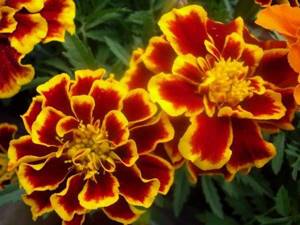
Marigold
Marigold
Let us separately consider sowing asters for seedlings of this species. What distinctive features are inherent in this plant? Its seeds are much larger and its seedlings grow faster. So they sprinkle these “well done” with soil when sowing a whole 1 cm. Marigolds love warmth, so it’s better to keep them in a room with a temperature of +23...+27 degrees. These seedlings are much more resistant to blackleg, so you don’t have to skimp on watering.
Annual dahlias
The seeds are very similar in size to marigolds. Due to their large size, they need to be sown at a distance of approximately 6x6 cm.
Beautiful nasturtium
When to sow asters for seedlings? You cannot rush with this plant, and it is even more contraindicated to sow the seeds directly into the garden, since nasturtium does not tolerate frost very well.
Also, it is for this plant that it is better to carry out pre-sowing treatment. When the seeds germinate, they are placed in a sowing hole up to 1.5–2 cm deep. Of course, you can also plant ungerminated seeds, but then put 2–3 of them in each hole.
It is best to grow nasturtium in peat cups, because these bushes do not tolerate planting quite well.
Petunia
But with this bush you will have to suffer. An unusually capricious plant. Seeds are sown at the end of February in moist soil. Since the diameter of the seeds is small, they are not buried in the ground, but left on the surface, only lightly sprinkled on top.
After planting, the petunia is covered with film to maintain the optimal temperature for germination of about +20 degrees. In addition, it is necessary to maintain an average level of humidity in the top layer of soil, otherwise mold will destroy all young shoots. It’s good that with petunias you don’t have to worry about how to plant asters for seedlings, because all the seedlings are initially in the garden.
After 7–12 days, when the plants already have several leaves, you need to start spraying them with a weak solution of potassium permanganate. At first, the seedlings are very sensitive and grow slowly.
Reproduction
Growing from seeds
Asters can reproduce from seeds. If the seed material is of good quality, it will give us dozens of multi-colored flowers of high decorative value. Aster has grayish-brown achenes with a highly elongated shape, somewhat similar to sunflower seeds. They are tough and covered with very short hairs. 1 g contains 400-700 seeds.
Good to know! Aster seeds are borne by ligulate and tubular flowers. Reed flowers produce much fewer seeds than tubular flowers, but the seed obtained from them is better. Seeds produced from reed and trumpet flowers require slightly different environmental conditions during growth and maturation, so weather plays a key role in producing quality seed. The seed produced from the oldest inflorescences has the best germination.

Aster seeds ripen in late September - early October. After harvesting, they should be dried, sorted, then transferred to a cool place with a relative humidity below 40%. The seed remains viable for 1-3 years after harvest.
Varieties growing nearby tend to self-pollinate, so the collected seeds may not replicate the characteristics of the mother plant.
Asters from seeds are grown at home, from seedlings, which can be grown at home or in a film tunnel. To sow seeds, you will need soil with good moisture capacity, rich in organic matter, with a pH of 6-6.5.
In gardens, asters are often sown in late April - early May, directly into the flower bed. Their seeds germinate within 7-14 days, at a temperature just below 15 °C, so growing aster from seedlings brings even better results.
When to plant aster for seedlings and in the ground? Aster seeds are sown for seedlings in the Moscow region, the central zone at the end of March or at the beginning of April in film greenhouses. 3-4 week old seedlings need to be planted in separate pots. Asters seedlings are planted in the ground when the last frost has passed - in mid-May. Planted every 15-20 cm, and larger varieties every 40 cm.
Alpine aster seeds are sown for seedlings at home in containers in spring or summer (from April to July), and they are planted in the ground in September. To ensure that the bushes grow well and become denser, planting is done at a distance of 30 × 30 cm.
By division
It is very easy to propagate asters vegetatively. They reproduce easily by dividing the plant. This is carried out in the spring, preferably in April and May. To propagate, you need to dig up a root ball, divide it and plant it in the selected area. Plants can grow in one place for several years.

Cuttings
Shrub asters are grown from cuttings. They can be cut in the spring from old plants and the rooted seedlings can be planted in a permanent place. The cuttings are placed in loose soil with a neutral or slightly alkaline reaction.
Choosing a place to plant asters
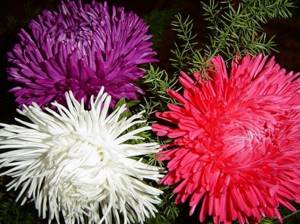
Aster is able to regenerate its damaged root system and even during flowering can easily tolerate replanting
Advantages of growing aster:
- flowers are not afraid of cold weather, and perennial asters are even able to bloom in temperatures down to -7 degrees;
- the seeds withstand unfavorable conditions well and germinate easily;
- It is convenient to propagate aster both by seeds and vegetatively;
- growing seedlings does not cause much trouble, but you can sow aster seeds directly in the beds;
- aster is able to regenerate its damaged root system and even during flowering can easily tolerate replanting;
- A huge selection of varieties and varieties of aster with flowers of the most amazing shapes and colors allows you to create a real masterpiece from your flower garden!
Read also: How to grow milk mushroom at home from scratch
Even a novice gardener can easily figure out how to grow asters. The main thing is to plant flowers in soil that has been previously fertilized with nutrients, and do not forget about weeding and timely watering. Well, if you manage to fertilize a couple of times over the summer, your flowers will grow especially beautiful and large, with powerful stems. However, some features of growing asters still need to be taken into account.
In order for multi-colored asters to get sick as little as possible and delight you with their bright beauty for a long time, you need to correctly determine the place on the site for planting them and prepare suitable soil. Like many other garden flowers, asters form large, healthy buds only if there is sufficient moisture and nutrients in the soil. Therefore, a flowerbed for them should be prepared in the fall by digging up the ground and adding river sand with humus or sand with peat to it so that the soil is fertile, breathable and well-drained.
The acidity of the soil should be close to neutral. If you add humus immediately before planting asters, the plants may be affected by fungal fusarium (growing asters on dense or acidic soils leads to the same result). In the spring, before digging, it is recommended to add ammonium sulfate, superphosphate and potassium salt to the soil.
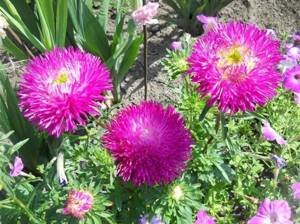
The best results can be achieved when sowing asters after marigolds, marigolds, and perennial grasses
Asters feel good in partial shade, they love open sunny places, but in extreme heat and drought they lose their decorative value. It is advisable to choose a place for the flowerbed that is protected from the wind and from constant dampness, so that the groundwater does not lie too close to the surface of the earth.
Growing and care
Care is limited to watering, pruning in March (dry stems can simply be broken off), from time to time the plants need to be fertilized and watered moderately. Asters should be weeded regularly so that perennials do not have to compete with other plants for water and nutrients.
Feeding and watering
Only tall species need to be fertilized in the spring with a dose of compost. Asters are fertilized before flowering, during the growing season of the plant. You can use multi-component fertilizers to feed asters, but you should remember that excess nitrogen causes a deterioration in flowering. In autumn it is useful to feed asters with compost.
Watering should be regular and abundant, especially during periods of drought, otherwise the leaves will begin to dry out from below, which will lead to weakening and reduction of flowering.
Trimming
Faded flower stalks are cut off in the spring to a few centimeters above the ground. Healthy plant parts can be placed in a composter. If plants are affected by powdery mildew, cut stems are only suitable for garbage. Bush aster (Symphyotrichum dumosum) grows into a dense carpet. To ensure that the plants maintain a beautiful, compact appearance, they are cut to half their height before flowering and fed with compost.
During the summer months, trimmed stems of New England aster (Symphyotrichum novae-angliae) and American aster (Symphyotrichum laeve) branch out and bloom later, longer, and more abundantly. Autumn asters are trimmed flush to the ground after flowering.

Rejuvenation and transplantation
Not only for propagation, but also in order to maintain an abundance of flowering for many years, plants should be regularly dug out of the ground, divided and replanted. This procedure is carried out every few years. Asters are perennial flowers, but over time they die off - the middle part of the bush dries out.
In early spring, the youngest underground rhizomes should be separated and transplanted to a new location. This will have a positive effect on flowering and reduce the risk of fungal diseases, to which aster plants are sensitive.
Wintering
These perennials are completely frost-resistant and do not need shelter for the winter. They can freeze only during very frosty and snowless winters.
Protection from diseases and pests
Most often, asters are affected by fungal diseases, especially powdery mildew. You can protect plants from powdery mildew by choosing varieties for planting that are resistant to this disease. Autumn varieties should be placed in sunny, ventilated places. Powdery mildew can also be promoted by over-fertilizing, so it is better to use organic fertilizers. Leaves affected by the fungus should be removed and destroyed, and not thrown into the composter.
On too light or too heavy soils, as well as in the event of unfavorable weather, asters are susceptible to fusarium. Plants wither and turn yellow, the lower parts become covered with plaque.
Diseased specimens must be removed, the remaining ones must be thoroughly sprayed with fungicide. Aster trees can only be planted in the same place after a few years; the disease may remain in the soil.
Shrub varieties are quite susceptible to pests; their thick, fleshy leaves are a delicacy, especially for aphids and slugs. Therefore, it is worth paying attention to preventive spraying against pests.
Diseases and pests
- A number of problems can arise when growing asters. In unsuitable soil, seeds often germinate poorly or not at all.
- If you plant an aster in a place where nightshade or matthiola, tulip, or gladiolus grew last year, then there is a high probability that the plant will become infected with fusarium. Sick asters are destroyed to prevent the spread of the fungus.
- Blackleg affects the root collar and bottom of the shoot of the plant. To prevent disease, the soil should be disinfected with a weak solution of potassium permanganate.
- Rust forms small pimples on the foliage, after which the latter dries out and dies. A 1% solution of copper sulfate will help cope with the disease.
- Jaundice is a disease spread by aphids and cicadas. When affected, the foliage turns pale and then begins to turn yellow, plant growth slows down, and the buds become green. If such symptoms are detected, diseased plants should be destroyed and healthy ones should be sprayed with Actellik.
- Of the pests, aster is most often affected by slugs, meadow bugs, aphids, spider mites and cutworms.
Growing from seeds
We have already figured out when to plant this flower. How to grow good seedlings?
In order for the plant to be strong, the seeds should initially be sown in nutritious soil. You can do it yourself.
To do this, mix in equal proportions:
- humus;
- sand;
- garden soil.
This mixture is then steamed in the oven, after which wood ash is added to it. It is very useful to add perlite to the prepared soil, which improves soil aeration and allows the root system of seedlings to develop better.
A wooden or plastic box used for seedlings is filled with prepared soil, lightly compacted and generously watered with potassium permanganate.
Before sowing seeds, they should be treated with any fungicide that is an effective remedy against fungal diseases that often affect seedlings. Sowing seeds is carried out as follows: grooves up to 2 cm deep are made in the soil, in which they are planted and sprinkled with soil no more than two mm deep.
Many gardeners recommend sprinkling the seeds with calcined sand, which allows them not to get wet when watering. There should be a distance of 2–5 cm between the grooves.
To prevent moisture from evaporating so quickly, the crops should be covered with a piece of glass. Shoots begin to appear on days 5–10, and the glass is removed after that.
The seedlings should be moved to a windowsill where there is good lighting, but the temperature should not exceed 15 degrees. This is an important condition when asters are grown at home, otherwise they begin to stretch.
As the soil dries, it is moistened with warm water from a spray bottle. In this case, you must be careful not to overwater the plant, otherwise a disease such as blackleg may occur.
At the first signs of such a lesion, it is necessary to immediately remove the diseased sprouts with a small earthen lump. After this, the hole should be covered with earth and the area should be spilled with a fungicide solution.
Picking seedlings
This procedure is carried out after the seedlings have 2-3 true leaves. The soil composition should be the same, only an additional spoonful of complex mineral fertilizer is added. To distribute it evenly, the soil should be mixed thoroughly.
The pot is filled with soil and lightly compacted so that it does not settle after watering. In the center of the pot, using a stick, make a depression in which the roots of the seedling will be placed.
If the plant has a highly branched root system, then pinching is done. When transplanting, the seedling is buried in the soil no more than one cm from the cotyledon leaves. The earth around it is compacted in such a way that it is not washed away by water when watering.





